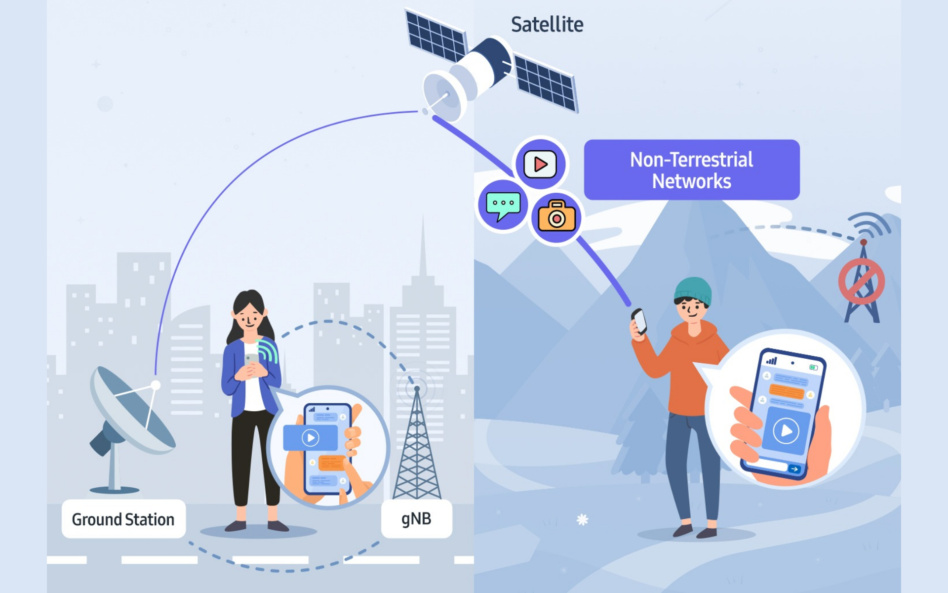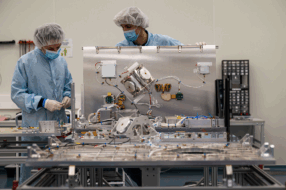On Thursday, South Korean tech conglomerate Samsung shared some color on its own space plans. The tech conglomerate introduced a satellite-to-smartphone communications chip for future phones, rather than unveil any flashy features now.
Above, we deliberately used the modifier “tech conglomerate”—twice—to describe Samsung. While best known for phones, Samsung is also the world’s second largest high-volume chipmaker by market share.*
- *as far as bleeding-edge logic chips are concerned…
- The company trails Taiwan’s TSMC, which dominates the contract chipmaking market.
Unpacking Samsung’s satellite plans
Samsung plans to integrate its new non-terrestrial networks (NTN) technology, as the company calls it, into the Exynos line of modem processors. Samsung claims its NTN technology is capable of two-way messaging and HD photo/video sharing.
The Korean firm says it developed protocols “to accurately predict satellite locations and minimize frequency offsets caused by the Doppler shift.” Finally, Samsung says that the next-generation modem will eliminate the need for a separate high-power wireless antenna chip, freeing up smartphone makers to get more creative with their future product lines.

Twas only a matter of time…
Samsung’s flagship Galaxy S23 unveiling event this February came and went without a satellite announcement. Samsung was also noticeably absent from Qualcomm and Iridium’s Satellite-to-Snapdragon partnership at CES in January.
…but patience is a virtue
Rather than partnering, Samsung seemed to think that building the technology from scratch—and to its own specs—was the right way forward. “When there is the right timing, infrastructure, and the technology…then of course for Samsung Galaxy, for our mobile division, we would also actively consider adopting this feature as well,” Samsung’s TM Roh told CNET earlier this month.
Obligatory “everybody is doing it” paragraph
Everybody is doing it. There’s Qualcomm and Iridium, as mentioned above, as well as Apple’s Globalstar-partnered Emergency SOS on iPhone 14s. SpaceX and T-Mobile are partnered on providing direct-to-cell service that would leverage the Starlink constellation, and China’s Huawei has rolled out satellite-enabled emergency SOS. And don’t forget about Lynk Global and AST SpaceMobile. Finally, there’s enough cellular backhaul plays that we simply don’t have the space to unpack them all.
Payload’s takeaway
For the most part, direct-to-cell technology is still in its infancy, and current constellations don’t have the capacity to support data-rich mobile features at scale. We’re in the earliest of innings for the market penetration (or value generation) of the technology. Still, direct-to-cell is already helping save stranded individuals and has the potential to connect both 1) remote regions and 2) underserved communities.
It’s abundantly clear that the technology will go from a nice-to-have to a default in high-end consumer smartphones over the course of the next decade.




